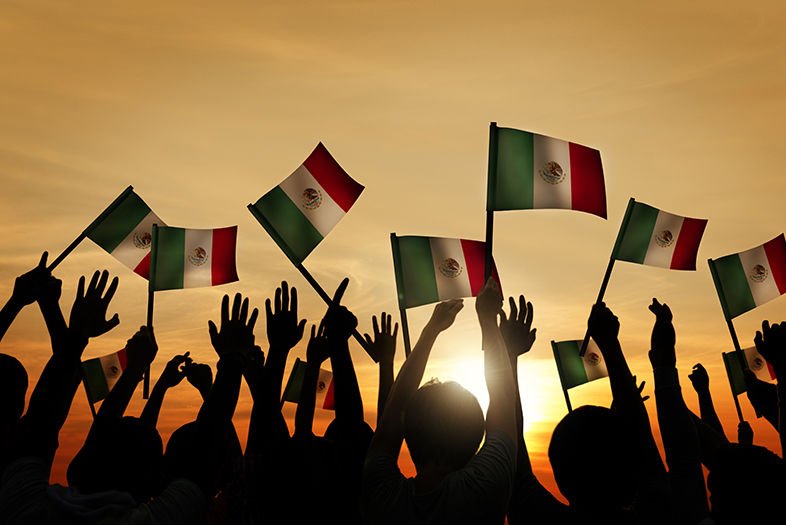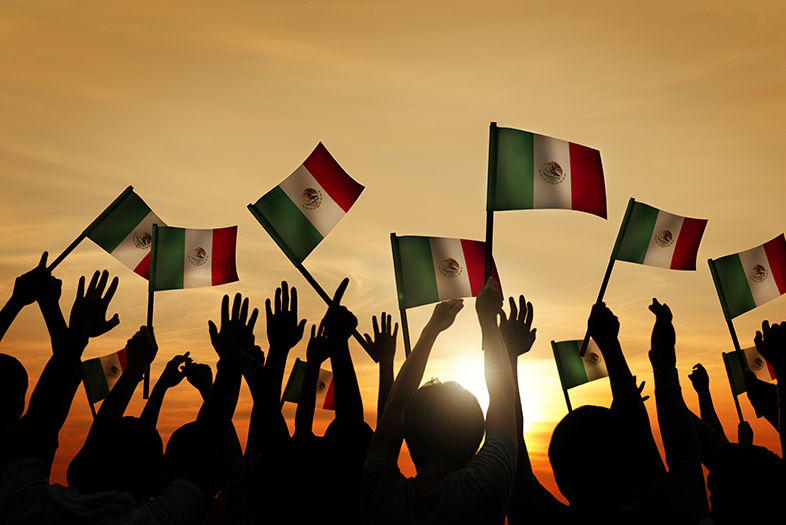Most San Diegans know September 16, not Cinco de Mayo, is Mexico’s Independence Day, a celebration that begins with festivities in the streets around the country the night before. But what’s the story behind the ol’ red, white, and green?
Mexico’s national flag made its debut in 1821, the year the country won its independence from Spain. Much like its U.S. counterpart, the flag’s details have morphed slightly through the years until 1968, when the government adopted the current version to coincide with the Mexico City Summer Olympics. (Despite the obvious resemblance, the tricolor design is not a blatant copy of the Italian flag, whose proportions and shades of green and red both vary.)
Green stands for hope and prosperity, white for purity (specifically that of the Roman Catholic faith, Mexico’s main religion), and red for the blood of national heroes.
The image in the center, which also serves as Mexico’s national seal, dates back to an Aztec legend in which the gods declared that the pre-Hispanic empire’s capital was to be built wherever they found an eagle with a serpent in its talon. When the Aztecs finally came across the snake-bearing bird, it just so happened to be (supposedly) perched on a cactus growing out of a rock out in the middle of a lake—the site of modern-day Mexico City.

PARTNER CONTENT
Celebrating the Red, White, and Green


















